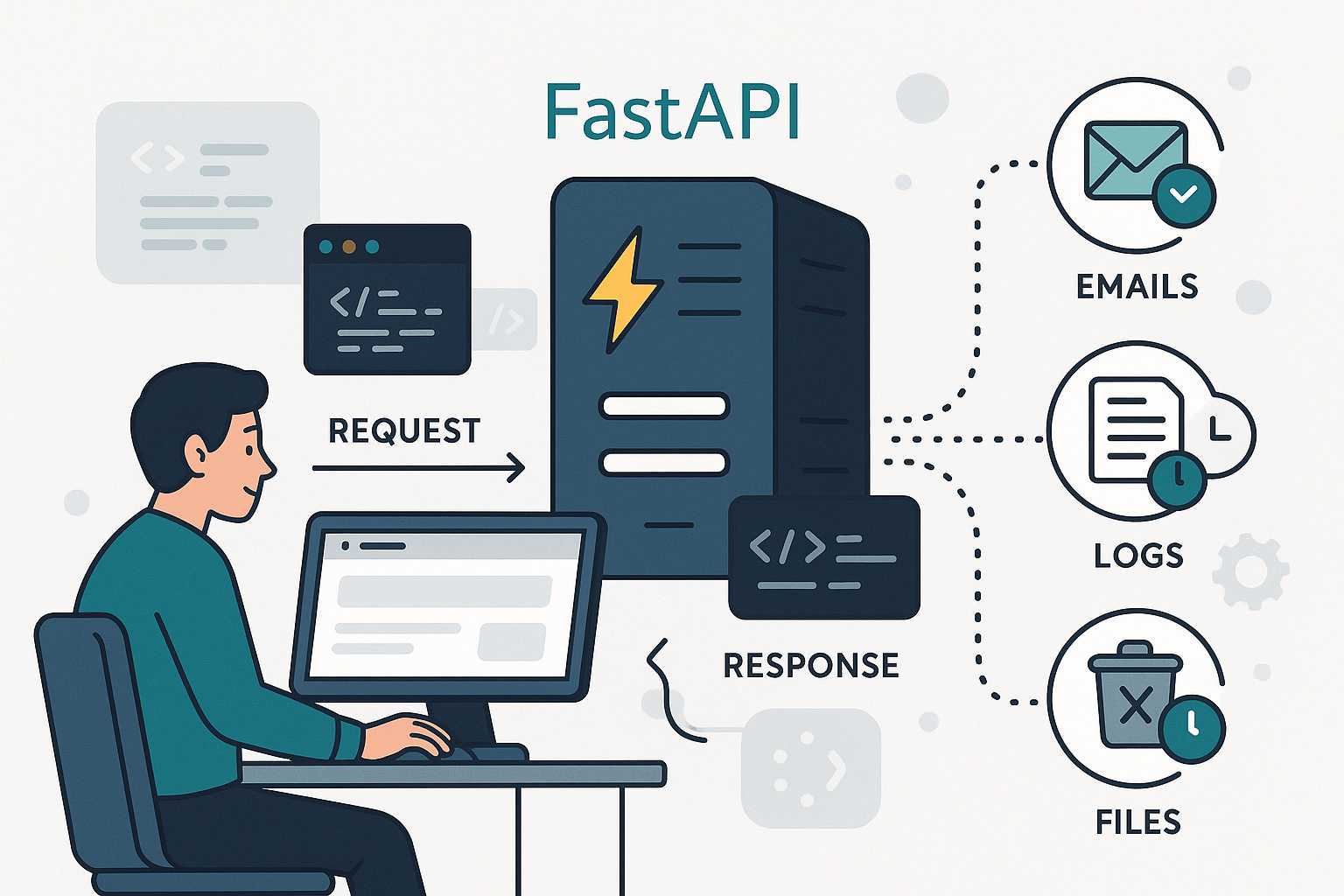FastAPI makes it delightfully simple to build high-performance APIs, but one common need in modern web development is to handle background work — like sending emails, updating statistics, or triggering other time-consuming tasks — without making the user wait. In this article, I’ll walk you through FastAPI’s built-in support for background tasks, how to use them effectively, and a few design considerations to ensure scalability.
What Are Background Tasks?
Background tasks in FastAPI provide a way to execute additional code after sending the response back to the client. This is ideal for tasks that don’t need to finish before you send the response — for example, logging, notifying other systems, or post-processing data.
How to Use Background Tasks in FastAPI
FastAPI exposes the BackgroundTasks class to make this straightforward. Here’s a simple example:
from fastapi import FastAPI, BackgroundTasks
app = FastAPI()
def write_log(message: str):
with open("log.txt", "a") as f:
f.write(message + "\n")
@app.post("/submit")
def submit_data(data: dict, background_tasks: BackgroundTasks):
background_tasks.add_task(write_log, f"Data submitted: {data}")
return {"message": "Submission received"}
In this snippet, the write_log function will be run after the response is sent. The client doesn’t have to wait for file I/O.
Practical Examples
1. Sending Emails Asynchronously
Suppose you want to send a confirmation email after user registration:
def send_email(email: str):
# Your email-sending logic
pass
@app.post("/register")
def register_user(email: str, background_tasks: BackgroundTasks):
# Registration logic here...
background_tasks.add_task(send_email, email)
return {"message": "Registration successful"}
2. Cleaning Up Temporary Files
Suppose your API processes uploads and temporarily saves files:
import os
def delete_temp_file(path: str):
os.remove(path)
@app.post("/process-file")
def process_file(file_path: str, background_tasks: BackgroundTasks):
# File processing...
background_tasks.add_task(delete_temp_file, file_path)
return {"message": "Processing started"}
Things to Consider
- Process Lifetime: FastAPI’s background tasks run in the same process. They’ll be killed if the process stops or restarts. Use a dedicated task queue (like Celery) for mission-critical background jobs.
- Error Handling: Exceptions in background tasks are usually swallowed. Log and monitor them as needed.
- Concurrency: Background tasks share the process/thread pool with your main application; don’t block them with heavy CPU work.
When to Use Something More Robust
If your background work is heavy, needs retries, cross-process coordination, or durability, look into asynchronous task queues like Celery (possibly integrated with Redis or RabbitMQ). For many use cases, however, FastAPI’s BackgroundTasks provide an elegant, simple solution out of the box.
Background tasks are a small but powerful feature in FastAPI. Used wisely, they help you build more responsive APIs by offloading slow operations without unnecessary complexity.
Happy coding!
— Fast Eddy


Leave a Reply